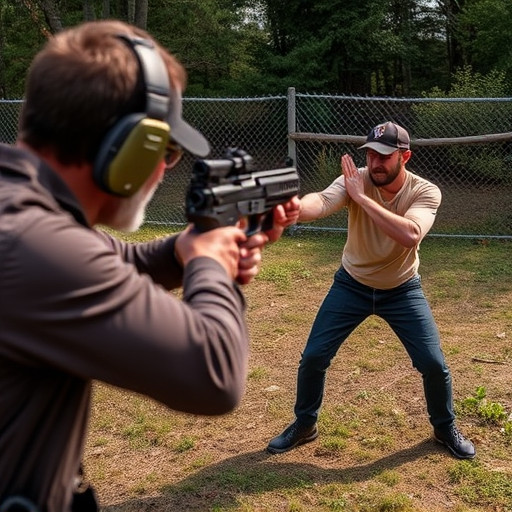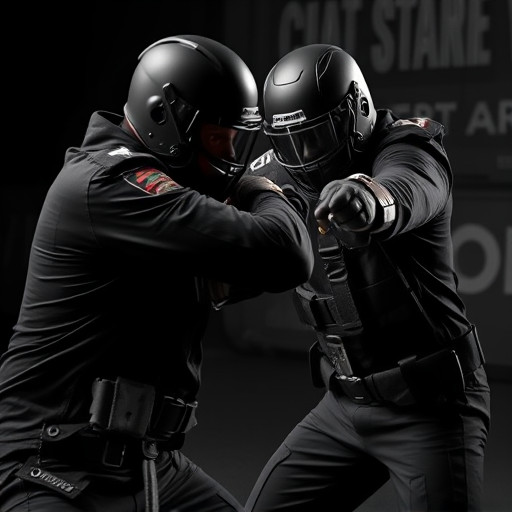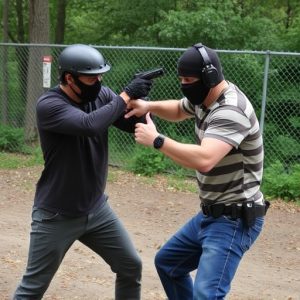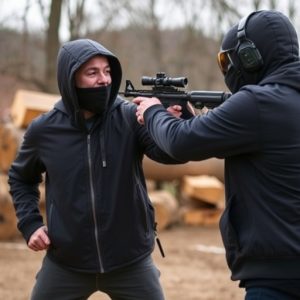Silent Stun Guns: Navigating State Regulations for Discreet Self-Defense
Understanding concealed carry laws is vital for individuals considering silent stun guns as a form o…….
Understanding concealed carry laws is vital for individuals considering silent stun guns as a form of self-defense, with regulations varying widely by jurisdiction. These laws govern device type, voltage output, and carrying methods, often requiring permits with age restrictions, background checks, training, and good character. Knowledge of local rules is crucial due to restrictions on storage in vehicles and workplaces. Silent stun guns offer non-lethal protection in bustling urban areas, but their popularity underscores the need for responsible ownership, including secure storage, child safety measures, and rigorous training in safe deployment and de-escalation tactics while navigating complex legal frameworks.
In today’s diverse landscape, understanding concealed carry regulations is paramount for personal safety. This comprehensive guide delves into the world of silent stun guns—discreet self-defense solutions that offer a unique approach to protection. We explore varied state-by-state regulations surrounding these devices, emphasizing responsible ownership through safety and training considerations. Discover how silent stun guns provide an effective yet subtle means of self-defense, tailored for those seeking peace of mind in diverse environments.
- Understanding Concealed Carry Laws: A Comprehensive Overview
- The Rise of Silent Stun Guns: Discreet Self-Defense Solutions
- Regulatory Differences Across States: A Case-by-Case Study
- Safety and Training Considerations for Responsible Ownership
Understanding Concealed Carry Laws: A Comprehensive Overview

Understanding concealed carry laws is paramount for individuals seeking to exercise their right to self-defense while adhering to legal frameworks. These regulations vary significantly across jurisdictions, dictating where and how one can legally carry a stun gun, particularly silent stun guns designed for discreet self-defense. In many places, permit systems govern the process, requiring applicants to meet specific criteria related to age, background checks, training, and good character.
Knowledge of local laws is crucial because some areas may have restrictions on the type of stun device allowed, its voltage output, and whether it can be openly or concealed carried. Additionally, regulations often address where these devices can be stored in vehicles and workplaces, emphasizing responsible ownership and use for personal safety without causing alarm or violating privacy rights.
The Rise of Silent Stun Guns: Discreet Self-Defense Solutions

In recent years, the concept of personal protection has evolved, and so has the technology behind it. The rise of silent stun guns represents a significant advancement in discreet self-defense solutions. These innovative devices offer individuals a non-lethal way to protect themselves in various situations, all while maintaining a low profile. With their ability to deliver a powerful electric shock without making a sound, silent stun guns provide an alternative to traditional firearms for those seeking a more subtle form of defense.
This emerging trend caters to the growing demand for personal safety, especially in urban areas known for their bustling streets and labyrinthine alleys. Silent stun guns offer a practical solution for folks who want to be prepared without drawing unnecessary attention. Their compact design and silent operation make them easily concealable, allowing users to carry them discreetly, ensuring peace of mind in an uncertain world.
Regulatory Differences Across States: A Case-by-Case Study

In the United States, regulations regarding concealed carry stun guns, or silent stun guns for discreet self-defense, vary significantly from state to state. This creates a complex landscape for individuals seeking to exercise their right to self-defense while adhering to local laws. For instance, some states have relatively liberal rules, allowing citizens to carry stun guns without a permit in public places for personal protection. In contrast, other states enforce strict regulations, demanding permits and specific training certifications before an individual can legally possess a stun gun.
These differences underscore the importance of understanding local laws before purchasing or carrying a concealed stun gun. States with permissive regulations may offer easier access to these devices, appealing to those prioritizing discreet self-defense options. Conversely, states with stringent rules aim to balance personal safety with public safety concerns, ensuring responsible handling and use of stun guns through regulatory measures.
Safety and Training Considerations for Responsible Ownership

Owning a silent stun gun comes with significant responsibilities that require careful consideration to ensure safety and responsible use. Beyond legal compliance, prospective owners must invest time in understanding the device’s functionality, limitations, and potential risks. Reliable training is crucial for mastering safe deployment techniques, de-escalation strategies, and proper handling to minimize the risk of accidental discharge or unintended harm.
Responsible ownership includes keeping stun guns out of reach of children, storing them securely, and being aware of local laws regarding concealed carry. Regular practice in a controlled environment allows individuals to familiarize themselves with the stun gun’s activation sequence, range, and effect, fostering confidence while maintaining a level-headed approach to self-defense.
In conclusion, navigating concealed carry regulations, especially concerning silent stun guns for discreet self-defense, requires a thorough understanding of state-specific laws. As discussed in this article, from comprehensive legal overviews to the rise of innovative self-defense tools like silent stun guns, and considering safety and training aspects, responsible ownership is key. When acquiring and carrying a stun device, staying informed about local regulations empowers individuals to protect themselves while adhering to legal boundaries, ensuring both personal security and public safety.


